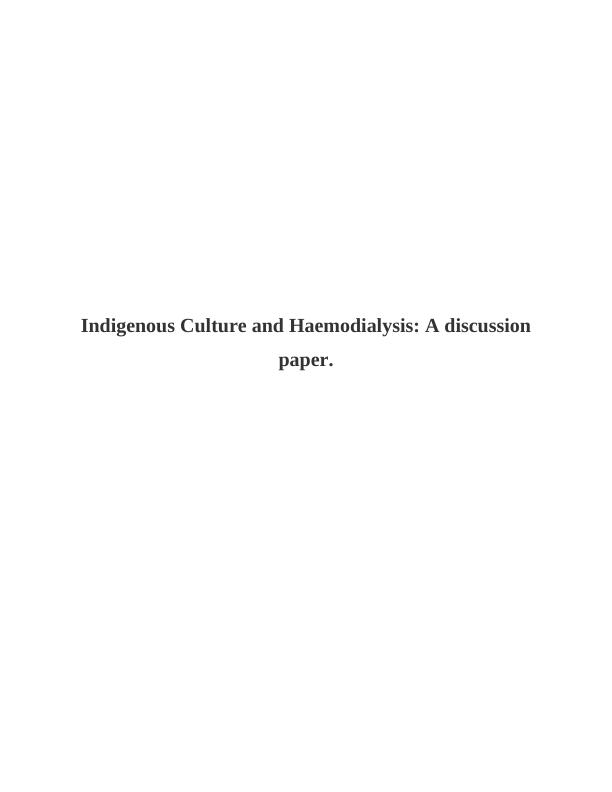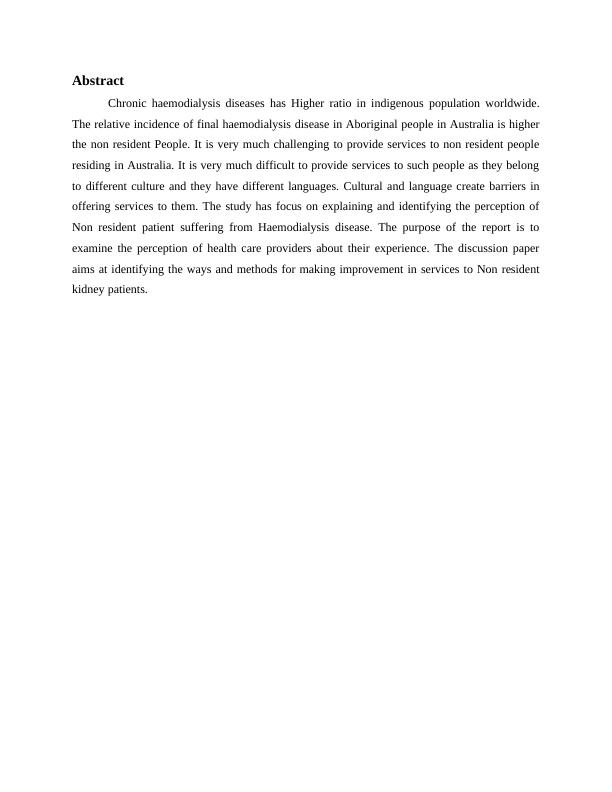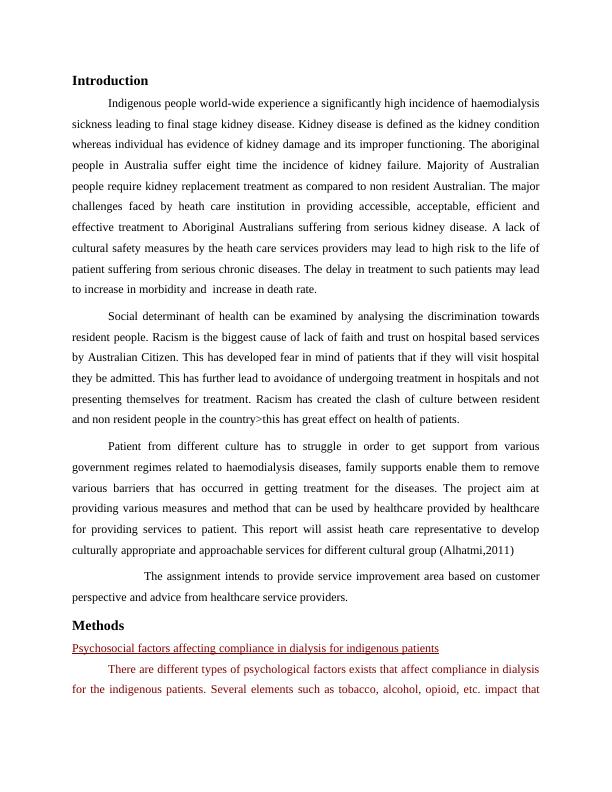Ask a question from expert
Indigenous Culture and Haemodialysis
13 Pages4076 Words138 Views
Added on 2020-06-05
Indigenous Culture and Haemodialysis
Added on 2020-06-05
BookmarkShareRelated Documents
Indigenous Culture and Haemodialysis: A discussionpaper.

Table of ContentsAbstract............................................................................................................................................3Introduction......................................................................................................................................4Methods............................................................................................................................................41. Data collection method.......................................................................................................42. Methods for improving services.........................................................................................5Burden on chronic disease affecting indigenous Australians.........................................................6The things that require improvement...............................................................................................7Discussion........................................................................................................................................9Results............................................................................................................................................10Conclusion....................................................................................................................................11REFERENCES..............................................................................................................................12

AbstractChronic haemodialysis diseases has Higher ratio in indigenous population worldwide.The relative incidence of final haemodialysis disease in Aboriginal people in Australia is higherthe non resident People. It is very much challenging to provide services to non resident peopleresiding in Australia. It is very much difficult to provide services to such people as they belongto different culture and they have different languages. Cultural and language create barriers inoffering services to them. The study has focus on explaining and identifying the perception ofNon resident patient suffering from Haemodialysis disease. The purpose of the report is toexamine the perception of health care providers about their experience. The discussion paperaims at identifying the ways and methods for making improvement in services to Non residentkidney patients.

IntroductionIndigenous people world-wide experience a significantly high incidence of haemodialysissickness leading to final stage kidney disease. Kidney disease is defined as the kidney conditionwhereas individual has evidence of kidney damage and its improper functioning. The aboriginalpeople in Australia suffer eight time the incidence of kidney failure. Majority of Australianpeople require kidney replacement treatment as compared to non resident Australian. The majorchallenges faced by heath care institution in providing accessible, acceptable, efficient andeffective treatment to Aboriginal Australians suffering from serious kidney disease. A lack ofcultural safety measures by the heath care services providers may lead to high risk to the life ofpatient suffering from serious chronic diseases. The delay in treatment to such patients may leadto increase in morbidity and increase in death rate.Social determinant of health can be examined by analysing the discrimination towardsresident people. Racism is the biggest cause of lack of faith and trust on hospital based servicesby Australian Citizen. This has developed fear in mind of patients that if they will visit hospitalthey be admitted. This has further lead to avoidance of undergoing treatment in hospitals and notpresenting themselves for treatment. Racism has created the clash of culture between residentand non resident people in the country>this has great effect on health of patients.Patient from different culture has to struggle in order to get support from variousgovernment regimes related to haemodialysis diseases, family supports enable them to removevarious barriers that has occurred in getting treatment for the diseases. The project aim atproviding various measures and method that can be used by healthcare provided by healthcarefor providing services to patient. This report will assist heath care representative to developculturally appropriate and approachable services for different cultural group (Alhatmi,2011)The assignment intends to provide service improvement area based on customerperspective and advice from healthcare service providers.MethodsPsychosocial factors affecting compliance in dialysis for indigenous patientsThere are different types of psychological factors exists that affect compliance in dialysisfor the indigenous patients. Several elements such as tobacco, alcohol, opioid, etc. impact that

End of preview
Want to access all the pages? Upload your documents or become a member.
Related Documents
Improving Healthcare Services for Aboriginal and Torres Strait Islanderslg...
|9
|3128
|337
Chronic Kidney Disease among Aboriginal and Torres Strait Islander Peoplelg...
|7
|2496
|199
Community Health Nursing Australia Case Study 2022lg...
|9
|2304
|12
Aboriginal and Torres Strait People’s Rate of DAMAlg...
|7
|1692
|101
Health Status of Indigenous and Non-Indigenous Populationlg...
|13
|4499
|207
Culturally Safe Healthcare for Indigenous Australians: A Case Studylg...
|12
|3198
|326